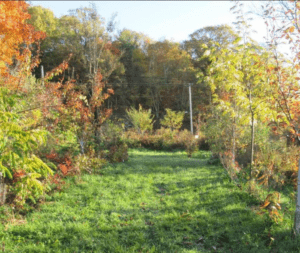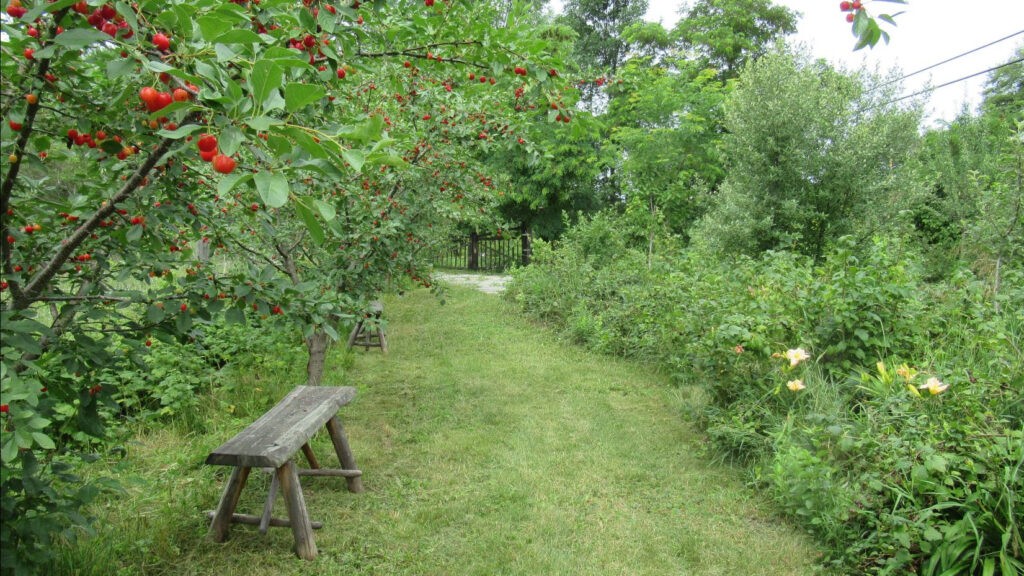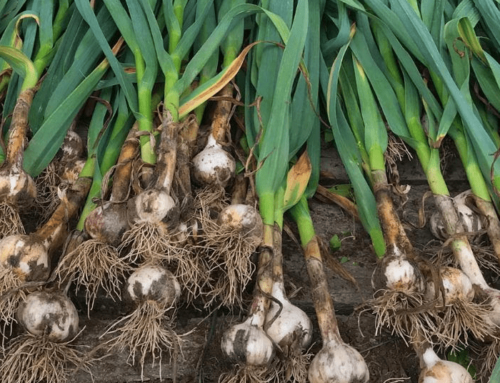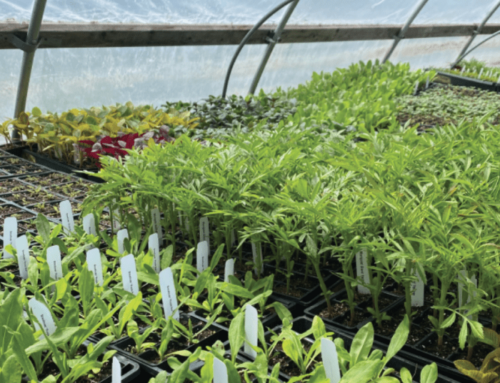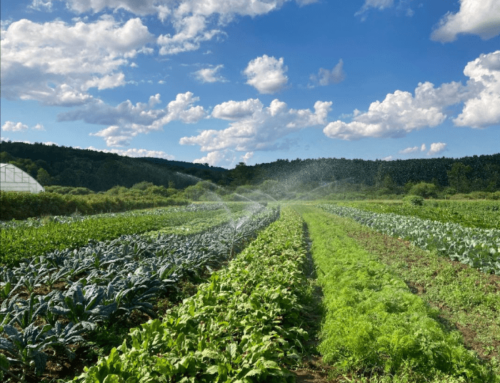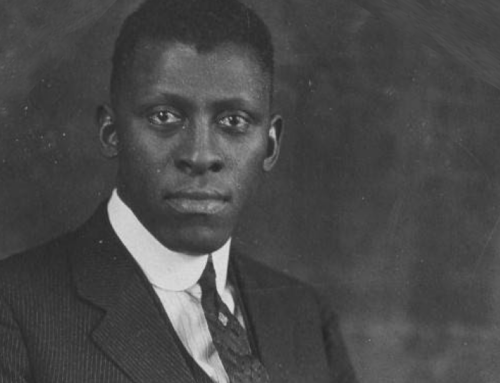By: Paul Figueroa, Communications Director at NOFA/Mass
Author and farmer Dani Baker presented a workshop at NOFA’s Summer Conference in Worcester titled “Native Perennial Food Plants for Your Edible Landscape”. NOFA/Mass’s Communications Director, Paul Figueroa sat down with Dani for an interview on this topic for our readers. If you’re interested in this workshop, workshop recordings will soon be available for purchase. Check out the NOFA Summer Conference page for the latest information on recordings.
About Dani Baker:
Dani Baker is a self-taught farmer and forest gardener who with her partner David operates a highly diversified certified organic farm in Northern New York State. Her book, The Home-Scale Forest Garden: How to Plan, Plant and Tend a Resilient Edible Landscape, was published by Chelsea Green In May of 2022, and is based on her 10 years’ experience developing the “Enchanted Edible Forest.” She loves to inspire others to try their hand at edible landscaping at any scale.
PF: An edible landscape sounds delicious, but how would you define it?
DB: An edible landscape is an intentional planting of food-producing plants modeled after a forest edge. In a natural forest edge, no one cultivates, fertilizes, or manages pests or diseases. Nature takes care of all these functions. So, in an edible landscape modeled after nature, the design includes other plants and hosts wild creatures which provide the nutrients and pest protection needed by the food-producing plants. And these functions can be incorporated at any scale: in a foundation planting on one side of a home, a bed in the back yard, an edible hedge screening the view of the neighbor, or on a larger plot of any size.
PF: Why should a grower consider an edible landscape?
DB: There are several advantages to installing an edible landscape. First, an edible landscape is perennial: You plant it once and it continues to produce food for you year after year. One component may not produce as much per square foot as a field of corn or beans, but since you use all the vertical space, when you add all the components together your harvest can be considerably greater per square foot than a monocrop. Second, although the labor required to plan and install an edible landscape is substantial, once established the labor is far less than an annual planting of the same size. In my experience, in addition to some pruning in late winter, mulching now and then, deadheading, and adding or replacing plants, the major call for labor is that required to harvest the abundance that increases each year. Since the ground is covered with mulch or living plants and multiple layers supply shade and collect dew, there is no need to irrigate. During a droughty time, perennial plants just go dormant, and then resume growth when precipitation resumes. And since the design includes a diversity of plants including those that supply nutrients and pest and disease protection as well as attracting beneficial creatures to help with these functions, there is relatively little need to add amendments or spray for pests and disease. A third advantage of the edible landscape’s diversity is that regardless of the nature of the winter or growing season, some plants will always flourish. This year for example, we had a hot spell in early April followed by colder weather and then four consecutive frosts into late May. While many of my early blooming fruit trees like plums and cherries had their blossoms killed and have born little fruit, the mulberries and persimmons are loaded, and many of the berry bushes are providing bumper crops (honeyberries, aronia, beach plums, elderberries and clove currants, for just some examples).
PF: What advice would you give someone who is thinking about turning their growing space into an edible landscape?
DB: The main thing a grower should realize is that the edible landscape will take time to become productive. Annual vegetables come into full production in one season. While some plants in an edible landscape will be harvestable during the first year or two, like many herbs and some berries, others may take a few years or even longer to provide a substantial harvest. So, if you are a farmer, you need to be able to wait to see the return on your investment, and if you are a gardener or homesteader, you need to be patient.
PF: Can you share some key principles or design considerations that growers should keep in mind when planning an edible landscape?
DB: There are several permaculture principles that are important to incorporate when planning an edible landscape. Aim to maximize diversity, solar absorption, and water conservation by using all the vertical layers and building in features that capture water. Matching plants with their ideal habitats will increase the probability that they will thrive with little maintenance. Incorporating plants that fix nitrogen, accumulate other nutrients, attract beneficial insects and deter pests will minimize your labor in providing for these functions. And for every important function, be sure to have at least three sources, so if one or two fail, the need is still being met. Finally, be sure to build in ample access in the design so you can get to every part of your landscape with whatever equipment you will need to use going forward.
PF: How can they ensure a balance between aesthetic appeal and functional productivity?
DB: Every plot is different as is each person’s aesthetic and taste in food. If you design your landscape to fit your plot, including plants that provide food that you like to eat in the quantities you want to produce, and which appeal to your aesthetic sense, then your plot’s aesthetic appeal and functional productivity will be naturally balanced.
PF: Soil health is crucial for successful edible landscapes. What soil preparation techniques and amendments do you recommend to create a fertile environment that supports a diverse range of edible plants? How can growers maintain soil health over time?
DB: I recommend a comprehensive soil test at the outset to determine the quality of your plot’s soil. If the results suggest the need for amendments to make your soil more compatible with the plants you wish to grow, then applying these at the outset is a good idea. Also, if drainage is a problem, adding cover crops to loosen the soil and break up any pan is an excellent low labor way to achieve these ends. It is always a good idea to apply copious quantities of organic matter on the surface, which the soil life will incorporate into the soil over time. If the soil remains undisturbed after initial planting, and covered with either living plants or organic mulch (like compost, leaves or wood chips), the soil health will naturally continue to improve.
Author’s Note: NOFA/Mass offers soil health technical assistance including soil lab analysis and inputs recommendations, soil health analysis, organic certification, and custom technical support. To learn more about our soil health programs and services, check out the soil health section on the NOFA/Mass Website. For specific soil health questions, send an email to [email protected]
PF: Managing a variety of edible plants in the same landscape can be challenging. What strategies do you suggest for selecting compatible plant combinations that promote mutual growth and discourage pests and diseases? How can companion planting contribute to a thriving edible landscape?
DB: Every situation is different. Make your best guess about what edible plants will “play nice” together with respect to their need for vertical and horizontal space, sunshine and moisture, including those that support the edibles by providing nutrients or pest protection, install them, and then observe them over time. When you assume an experimental attitude and welcome what nature has to teach you, you will learn what combinations thrive in your setting.
PF: As seasons change, the landscape’s appearance and plant requirements evolve. How can farmers and gardeners create a year-round supply of edible produce by strategically selecting plants with staggered harvest times? What advice do you have for extending the growing season and maximizing productivity?
DB: By using all the vertical space in an edible landscape, it is relatively easy to design a planting so your harvest can span the entire growing season. For example, you may have perennial vegetables and greens as an herbaceous layer which you harvest as early as March (sunchokes) or April (Good King Henry and Turkish Rocket) as late as November (groundnut). Likewise, edible flowers in the same layer can bloom very early (violets) to late in the fall (borage). An assortment of berry bushes can produce fruit in June (honeyberries and gooseberries), December (high bush cranberry and goji berry), and every month in between. Tree fruits that can grow above the berries like plums, pears, apples, American Persimmon or Pawpaw ripen from mid-summer to late into the fall. With experience, you will discover what plants do well under your conditions. You may wish to add more of these productive plants as replacements for those that fail to thrive. For example, in my garden I have found that peaches are incompatible with my climate and soil conditions, so over time I have been replacing them with American persimmons and Mulberries which have thrived on my site.
PF: How can a grower find more information about edible landscapes?
DB: There are numerous books, podcasts and YouTube videos on the subject. In addition, there is nothing like visiting an established edible landscape to experience it with all your senses and observe the edible plants in compatible combinations.
To learn more about Dani’s work at Cross Island Farms, or to find more information about her book “The Home-Scale Forest Garden” here.

